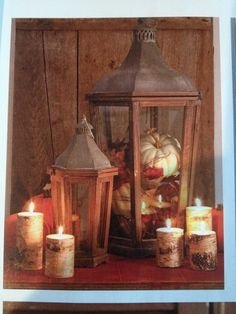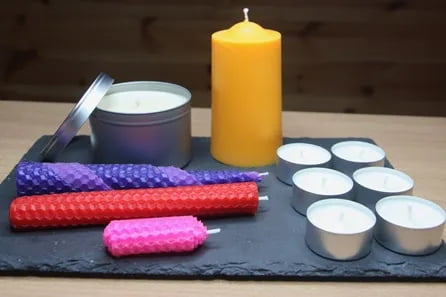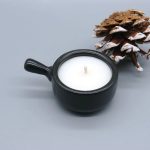Candle making is a process that requires precision and attention to detail. One crucial factor that greatly affects the outcome of your candles is temperature. Understanding and controlling the temperature at each stage of the candle-making process is essential in ensuring high-quality results.
To accurately monitor the temperatures involved, using a thermometer is a must. There are various types of thermometers available for candle making, each with its own advantages and disadvantages. In this article, we will specifically explore the use of digital thermometers for candle making.
Digital thermometers have gained popularity in recent years due to their ease of use and accuracy. They provide precise temperature readings in a matter of seconds, allowing candle makers to closely monitor and adjust the temperature as needed throughout the process. In this section, we will delve into why temperature is crucial in candle making and discuss the importance of using an appropriate thermometer, particularly a digital one.
Whether you are a beginner or an experienced candle maker looking to enhance your craft, understanding how temperature impacts your candles and utilizing the right tools is essential. So, let’s explore further how a digital thermometer can revolutionize your candle making experience by providing accurate temperature readings and helping you achieve consistent results every time.
Understanding the Different Types of Thermometers for Candle Making
When it comes to candle making, temperature plays a crucial role in achieving the perfect results. To ensure that your candles turn out just right, it is important to understand the different types of thermometers available for candle making.
There are several options when it comes to thermometers for candle making, each with its own advantages and disadvantages. One type of thermometer commonly used is a digital thermometer. Digital thermometers offer many benefits over traditional mercury or glass thermometers.
Digital thermometers are typically faster and more accurate compared to other types of thermometers. They provide precise temperature readings that are easy to read and understand. Additionally, digital thermometers often come with features such as memory function or programmable alarms, which can be helpful when monitoring temperature during the candle-making process.
Another advantage of using a digital thermometer is that they are usually waterproof or at least water-resistant. This is especially important in candle making since the wax can be hot and liquid during certain stages. Having a waterproof thermometer ensures that you can safely measure the temperature without worrying about damaging the device.
Moreover, digital thermometers often have a wide temperature range, allowing you to measure temperatures both below and above boiling point depending on your specific requirements. This versatility makes them suitable not only for measuring melting wax but also for checking the temperature of additives or fragrance oils that need to be added at specific temperatures.
Advantages of Using a Digital Thermometer for Candle Making
Using a digital thermometer for candle making comes with several advantages that make it a popular choice among candle makers.
Firstly, one of the main advantages of using a digital thermometer is its accuracy. Digital thermometers provide precise temperature readings, allowing candle makers to maintain consistency in their candle-making process. This is crucial because different types of wax and fragrances require specific melting points to achieve the desired results. With a digital thermometer, candle makers can monitor and adjust the temperature more effectively, ensuring that their candles turn out exactly as they envisioned.
Another advantage of digital thermometers is their speed. Unlike traditional mercury or glass thermometers, which may take several minutes to display an accurate reading, digital thermometers provide instant results. This saves time during the candle-making process and allows candle makers to work more efficiently.
Furthermore, digital thermometers often come with additional features that further enhance their convenience and usability. Many models have built-in memory functions that store previous temperature readings, enabling users to refer back to them if needed. Some digital thermometers also have adjustable probes that can be easily cleaned or replaced, making maintenance easier for candle makers.
| Type of Thermometer | Advantages |
|---|---|
| Digital Thermometer | – Accurate temperature readings
|
| Glass Thermometer | – Can be used without batteries
|
| Mercury Thermometer | – Provides precise readings
|
| Type of Thermometer | Advantages |
Step-by-Step Guide on Using a Digital Thermometer for Candle Making
Using a digital thermometer is a simple and effective way to ensure that the temperature of your melted wax is at the optimal level for candle making. Here is a step-by-step guide on how to use a digital thermometer properly for your candle making projects:
- Choose the right thermometer: Make sure to select a digital thermometer specifically designed for candle making. Look for one with a long probe that can reach deep into your melting container and provide accurate readings.
- Prepare your materials: Gather all the necessary materials for your candle making project, including your wax, fragrance oils, colorants, and wicks. Set up your workstation in a well-ventilated area and ensure that all surfaces are clean and free from clutter.
- Place the thermometer in the melting container: Insert the probe of your digital thermometer horizontally into the wax-filled container, ensuring that it is submerged in the liquid but not touching the sides or bottom of the pot. The reading on the thermometer should accurately represent the temperature of the wax.
- Monitor and adjust: Keep an eye on the temperature reading on your digital thermometer as you heat up the wax. Slowly increase the heat until you reach your desired pouring temperature. Stir occasionally to help distribute heat evenly throughout the wax.
- Take readings at different stages: It’s important to take multiple temperature readings at different stages of your candle making process, such as when adding fragrance oils or colorants, to ensure that you are working within safe temperature ranges.
- Clean and store: After each use, clean your digital thermometer thoroughly by wiping it with a cloth dampened with rubbing alcohol or warm soapy water. Store it in a safe place away from extreme temperatures or sunlight to maintain its accuracy.
By following these steps, you can confidently use a digital thermometer for candle making and achieve consistent results every time. Remember to always refer to manufacturer guidelines and safety precautions when using any type of thermometer in this craft.
Common Mistakes to Avoid When Using a Digital Thermometer for Candle Making
Using a digital thermometer for candle making can be a great way to ensure that you achieve the perfect temperature for your wax. However, there are some common mistakes that beginners often make when using this tool. Avoiding these mistakes will help you create better quality candles and prevent any potential accidents or mishaps.
One common mistake is not calibrating the digital thermometer before use. It is important to test the accuracy of your thermometer before relying on it to monitor the temperature of your wax. To do this, simply place the tip of the thermometer in boiling water and check if it reads 212°F (100°C). If it doesn’t, you may need to adjust or replace your thermometer.
Another mistake to avoid is not properly cleaning and maintaining your digital thermometer. After each use, make sure to wipe off any excess wax or residue from the probe with a clean cloth or paper towel. Additionally, regularly check the battery life of your thermometer and replace it as needed to ensure accurate readings.
A third common mistake is not using a protective cover or sleeve for your digital thermometer. When measuring the temperature of hot liquid wax, it is important to protect yourself from potential burns. Utilizing a heat-resistant cover or sleeve for your thermometer will provide an extra layer of safety while working with hot wax.
By avoiding these common mistakes, you can ensure that you are using your digital thermometer correctly and effectively in candle making. Taking these precautions will help you achieve accurate temperature readings and create high-quality candles that burn evenly and safely.
Alternative Thermometers for Candle Making and Their Pros and Cons
Types of Alternative Thermometers for Candle Making
When it comes to measuring temperature in candle making, there are several alternative thermometers available. While digital thermometers are widely used and highly recommended, it is important to explore other options as well. Here are a few alternatives with their pros and cons:
Dial Thermometers
Dial thermometers consist of a metal probe attached to a dial that indicates the temperature. They are easy to use and read, making them a popular choice among beginners. The biggest advantage of dial thermometers is their durability. They can withstand high temperatures without getting damaged. However, they may not provide the same accuracy as digital thermometers, especially when measuring very precise temperatures.
Metal Probe Thermocouples
Metal probe thermocouples are another alternative commonly used by candle makers. They consist of a metal probe connected to an external device that displays the temperature reading. These devices often have different units of measurement and various features like alarms or memory functions. One advantage of metal probe thermocouples is their versatility – they can be used for various applications beyond candle making. However, they can be more expensive compared to other thermometer options.
Infrared Thermometers
Infrared thermometers utilize infrared technology to measure surface temperatures without coming into direct contact with the object being measured. This makes them efficient and safe for use in candle making. Infrared thermometers are quick and easy to use, providing instant readings from a distance.
They are ideal for monitoring the temperature of melted wax without having to insert a thermometer directly into it. However, keep in mind that infrared thermometers may not provide accurate readings if the surface being measured is reflective or covered by residue or debris.
Thermometer Strips
Thermometer strips are adhesive strips containing heat-sensitive liquid crystals that change color based on temperature. They are convenient and affordable options for temperature monitoring in candle making. Thermometer strips can be applied to various surfaces, including containers or molds, to monitor the temperature during the cooling process. However, it’s important to note that thermometer strips may not provide the same level of accuracy as digital thermometers.
Pros and Cons
Each alternative thermometer option comes with its own set of advantages and disadvantages. While some options may be more affordable or versatile, they may not provide the same accuracy as digital thermometers. It is important to consider factors such as the specific requirements of your candle making process, budget constraints, and personal preferences when choosing an alternative thermometer.
Tips and Tricks for Using a Digital Thermometer Effectively in Candle Making
Calibrating Your Digital Thermometer
Before using your digital thermometer for candle making, it is important to calibrate it properly to ensure accurate readings. To calibrate your thermometer, you can use the ice point method or boiling point method. For the ice point method, fill a glass with crushed ice and a small amount of water.
Insert the probe of your digital thermometer into the mixture and wait for it to stabilize. The temperature should read 32 degrees Fahrenheit (0 degrees Celsius). If it doesn’t, you can adjust the calibration screw on the back of the device until it reads the correct temperature.
Placing Your Digital Thermometer Correctly
To get accurate temperature measurements when making candles, it is essential to place your digital thermometer in the right location. Submerge the probe into the wax mixture deep enough to reach its core but avoid touching the bottom or sides of the container. This will give you an accurate reading of the overall temperature of your wax.
Stirring The Wax Before Taking Temperature Measurements
Before taking temperature measurements with your digital thermometer, make sure to stir your wax thoroughly. This ensures that all parts of the mixture are evenly heated or cooled, giving you a more accurate reading. If there are any temperature variations within the wax, stirring will help eliminate them and provide consistency in your measurements.
Cleaning and Maintaining Your Digital Thermometer
Regular cleaning and maintenance of your digital thermometer are crucial for its accuracy and longevity. After each use, wipe it clean with a soft cloth or sponge dampened with soapy water. Avoid submerging the entire device in water as this could damage its internal components. Additionally, keep it away from extreme temperatures and handle it with care to prevent any damage.
By following these tips and tricks for using a digital thermometer effectively in candle making, you can ensure precise temperature measurements, leading to successful and high-quality candles.
Expert Advice on Choosing the Right Digital Thermometer for Candle Making
Choosing the right digital thermometer for candle making is crucial to ensure accurate temperature readings during the process. With so many options available in the market, it can be overwhelming to make the right choice. However, with some expert advice, you can find a digital thermometer that suits your needs perfectly.
Here are some expert tips to help you choose the right digital thermometer for candle making:
- Consider the Temperature Range: Different types of candles require different temperature ranges during the melting and pouring process. Make sure to choose a digital thermometer that has a temperature range wide enough to meet your specific candle making needs.
- Accuracy and Response Time: Accuracy is key when it comes to measuring temperature in candle making. Look for a digital thermometer that provides precise measurements with a quick response time. This will enable you to make necessary adjustments promptly and avoid any potential issues.
- Waterproof and Heat-Resistant: Candle making involves working with hot wax and liquids, so it’s essential to choose a digital thermometer that is waterproof and heat-resistant. This will ensure its durability and longevity even when exposed to high temperatures or accidental spills.
- Easy-to-Read Display: Look for a digital thermometer with a clear and easy-to-read display. This will allow you to monitor the temperature accurately without straining your eyes or misreading the measurements.
- Additional Features: Some digital thermometers come with additional features like alarms, timers, or calibration options. Consider your personal preferences and requirements when choosing these extra features, as they can enhance your overall candle making experience.
By considering these expert tips, you can confidently select the ideal digital thermometer for your candle making endeavors. Remember that investing in a high-quality digital thermometer not only ensures accurate temperature readings but also contributes to producing consistently excellent candles each time you create them.
Frequently Asked Questions About Using a Digital Thermometer for Candle Making
If you are new to candle making or considering using a digital thermometer in your candle-making process, you may have some questions about its use and effectiveness. Here are answers to some frequently asked questions about using a digital thermometer for candle making:
1. Can I use any type of digital thermometer for candle making?
While there are various types of digital thermometers available on the market, not all of them are suitable for candle making. It is best to choose a digital thermometer specifically designed for candle making, as it will have features that make it more accurate and convenient for this specific purpose. Look for a thermometer with a wide temperature range, a fast response time, and a long probe.
2. How do I calibrate my digital thermometer?
Calibrating your thermometer is an important step to ensure accurate temperature readings. To calibrate your digital thermometer, fill a glass with ice water and insert the probe into the water without touching the sides or bottom of the glass. Wait for the reading to stabilize, and then adjust the calibration if necessary according to the manufacturer’s instructions.
3. What is the ideal temperature range for melting wax?
The ideal temperature range for melting wax can vary depending on the type of wax you are using. However, as a general guideline, most waxes melt between 120°F and 180°F (49°C – 82°C). It is important not to exceed the maximum recommended temperature for your specific wax type to avoid overheating or degradation.
4. Can I use my digital thermometer to measure fragrance oil temperatures?
Yes, you can use your digital thermometer to measure fragrance oil temperatures when adding them to your melted wax. Fragrance oils generally have specific temperature recommendations for optimal scent throw and performance. Use your digital thermometer to ensure the fragrance oil is within the recommended temperature range before adding it to your wax.
Remember to always refer to the manufacturer’s instructions for your digital thermometer and follow proper safety precautions when using it in your candle-making process. Using a digital thermometer can greatly improve the accuracy and quality of your candles, allowing you to create beautiful and consistent results every time.
Conclusion
In conclusion, using a digital thermometer for candle making is highly recommended for several reasons. Firstly, it allows for precise temperature control, which is crucial in achieving the desired results in your candle-making process. Whether you are melting wax or monitoring the cooling temperature of your candles, a digital thermometer ensures that you can accurately measure and maintain the appropriate temperature throughout.
Additionally, a digital thermometer is easy to use and provides quick readings, making it a convenient tool for candle makers of all skill levels. Unlike traditional thermometers that may take longer to display accurate readings, digital thermometers offer instant results, allowing you to save time and streamline your candle-making process.
Furthermore, with the wide range of digital thermometers available on the market today, there are options that cater specifically to candle making. These specialized thermometers often come with features such as adjustable probes or built-in timers that can further enhance your candle-making experience.
Frequently Asked Questions
Can I use any thermometer for candle making?
While it is possible to use any thermometer for candle making, it is recommended to use a thermometer specifically designed for that purpose. Candle making requires precise temperature control, as different types of wax have different melting and pouring points. A dedicated candle-making thermometer will provide accurate readings within the desired temperature range needed for manipulating the wax effectively.
What kind of thermometer is used for candle making?
The most commonly used type of thermometer for candle making is a digital candy or kitchen thermometer. These thermometers typically have a long probe that can be inserted into the wax to measure its temperature accurately. They are designed to withstand high temperatures and provide quick and accurate readings, essential for handling hot melted wax during the candle-making process.
What is the best thermometer for candle wax?
The best thermometer for candle wax is subjective and can depend on personal preference and experience level. However, many professional candle makers prefer using a digital laser infrared thermometer.
This type of thermometer allows you to measure the surface temperature of the molten wax without direct contact, which can minimize potential contamination or stirring that may affect the finished candles negatively. Laser infrared thermometers are efficient, easy to use, and offer quick temperature readings at a distance, making them ideal for large-scale candle production or when working with multiple containers simultaneously.

Welcome to my candle making blog! In this blog, I will be sharing my tips and tricks for making candles. I will also be sharing some of my favorite recipes.





